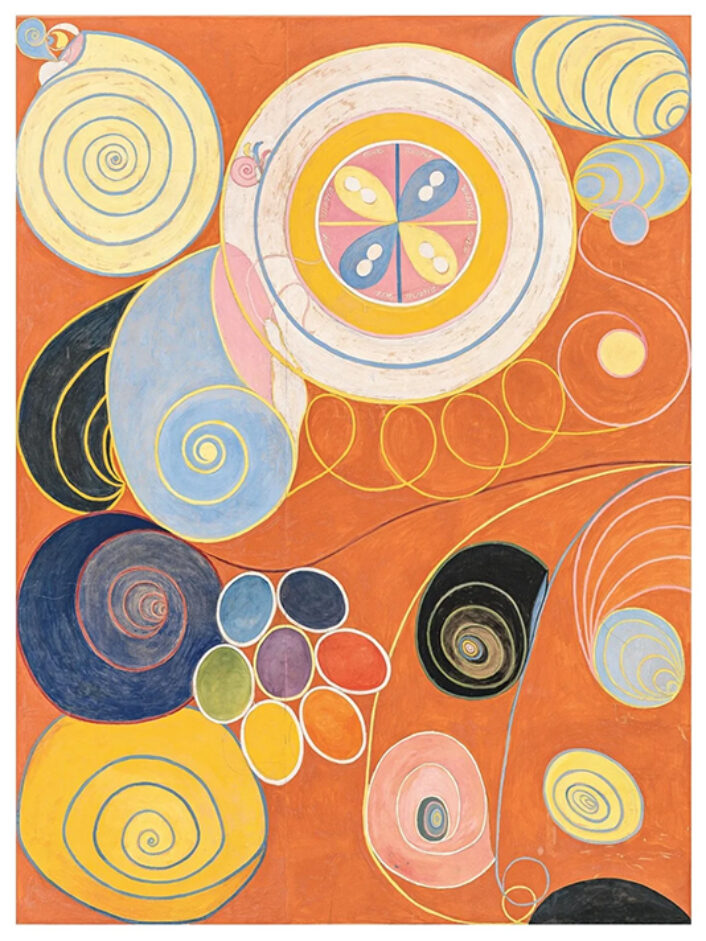Fine Art
Helen Frankenthaler’s soft pigments
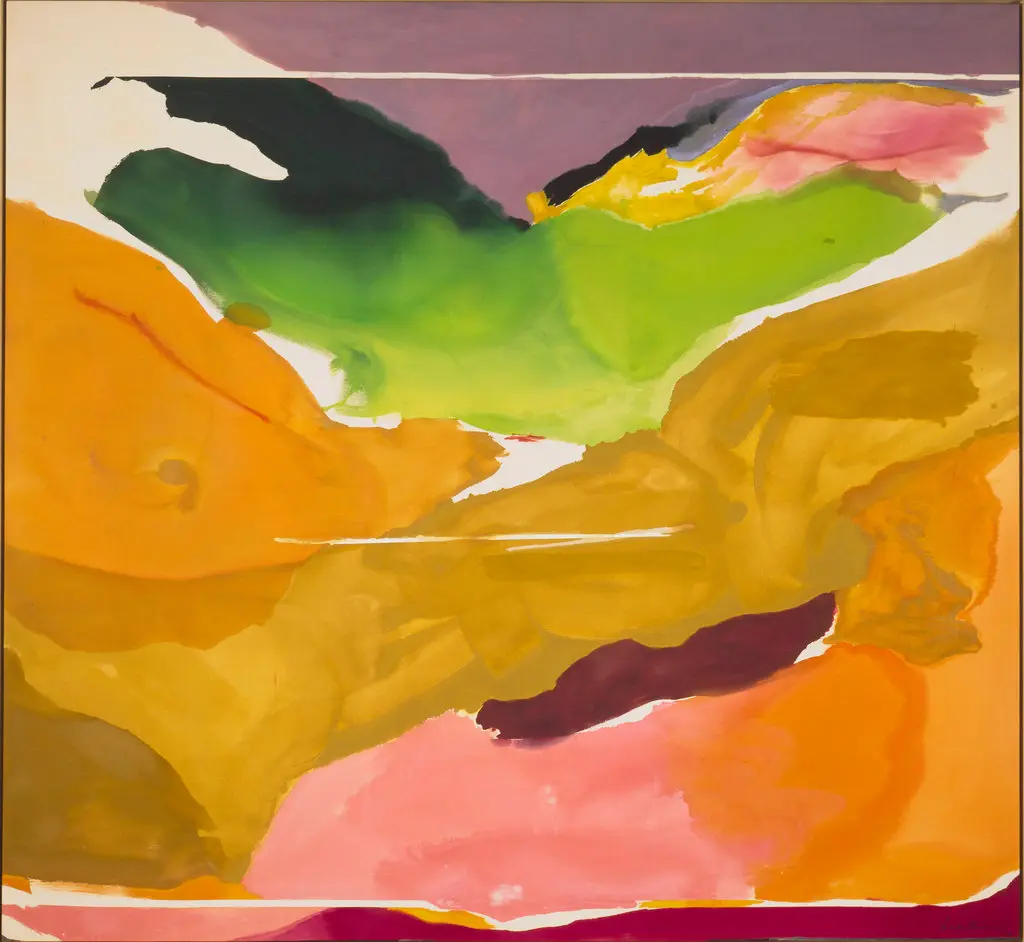
“Nature Abhors a Vacuum,” 1973. The painting was a gift from Audrey and David Mirvish of Toronto, Canada; it is presented at the National Gallery of Art in Washington, D.C.
Image courtesy of: The New York Times
Helen Frankenthaler has long been seen as one of America’s greatest artists of the twentieth century. As an Abstract Expressionist painter, she has been credited for helping to transition a new generation of artists from Abstract Expressionism to Color Field painting.
Specifically, her “patented” soak-stained painting technique helped to expand opportunities within abstract painting; this essentially birthed the color-field movement. Her raw canvases, often saturated with washes of paint, were tremendously impactful on postwar contemporary art in America.
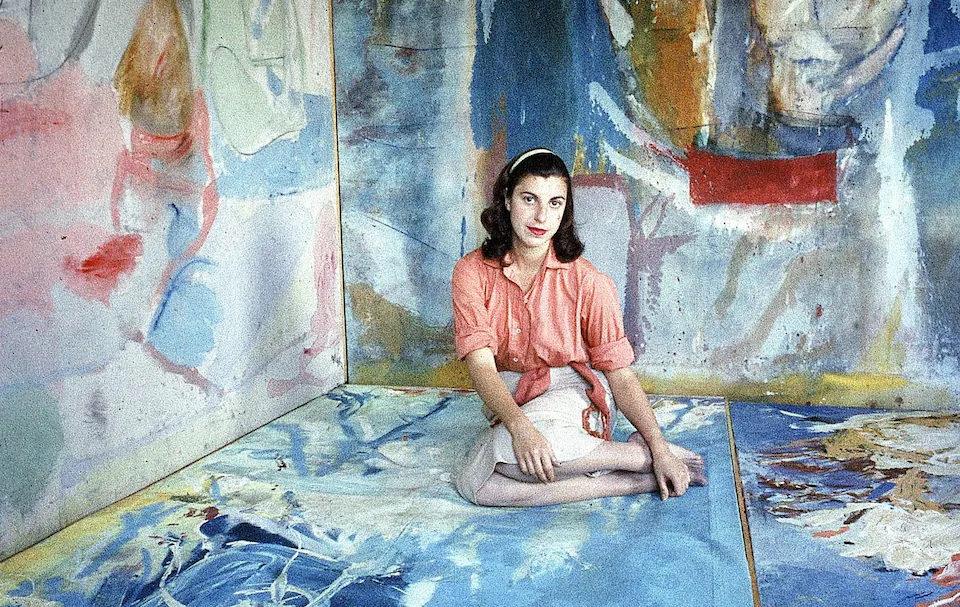
Frankenthaler circa 1956.
Image courtesy of: Telegraph, photographed by: Gordon Parks
Frankenthaler was intent on establishing her own way and forging her unique path in the art world; she began by refining a technique that was developed by Jackson Pollock, using influences found in some of the era’s known colorists. In basic language, this new technique was called Color Field; however, critics also referred to it as Post-Painterly Abstraction. The artist differed from Pollock in that she (courtesy of The New York Times article by Grace Glueck), “poured turpentine-thinned paint in watery washes onto the raw canvas so that it soaked into the fabric weave, becoming one with it” while he “used enamel that rested on raw canvas like skin.”
Her soak-staining method emphasized the canvas’ flat surface, calling attention to the actual paint on the canvas. This revolutionary technique brought forth a romantic elegance, and an airiness to the painted surface that did not exist with paintings from “First Generation” Abstract Expressionist painters.
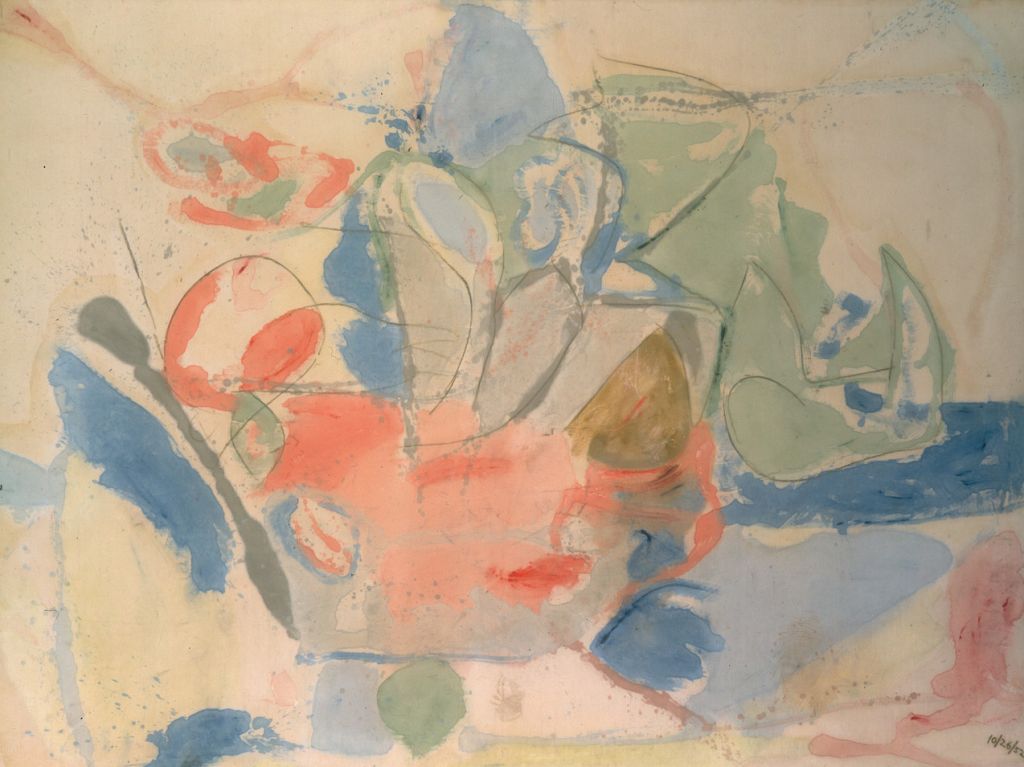
“Mountains and Sea,” 1952. The painting is on a long-term loan to the National Gallery of Art in Washington, D.C.
The painting became Frankenthaler’s most recognized, even though the artist repeated alluded to the fact that the technique came about because of sheer laziness. Without sealing the canvas’s surface, the paint that was thinned down with Kerosene and turpentine became immersed into the canvas’s fibers. Once those two materials met, the paint blossomed into soft, elegant shapes.
Image courtesy of: Guggenheim Bilbao
Frankenthaler often said that her inspirations were landscapes. One of her first, “big deal” paintings, “Mountains and Sea” was painted upon returning home from a trip to Nova Scotia. The work portrays a delicate balance between drawing and painting, and waves of effervescent blues and pinks. About the painting, Frankenthaler said, “The landscapes were in my arms as I did it. I didn’t realize all that I was doing. I was trying to get at something — I didn’t know what until it was manifest.”
The abstract imagery that Frankthaler painted reflected the joy she felt when working with paint and the feelings she surmised when meditating on personal experiences. Unlike others during that time period, Frankenthaler considered each painting as a separate piece and not one of a series, as was popular with her colleagues at the time.
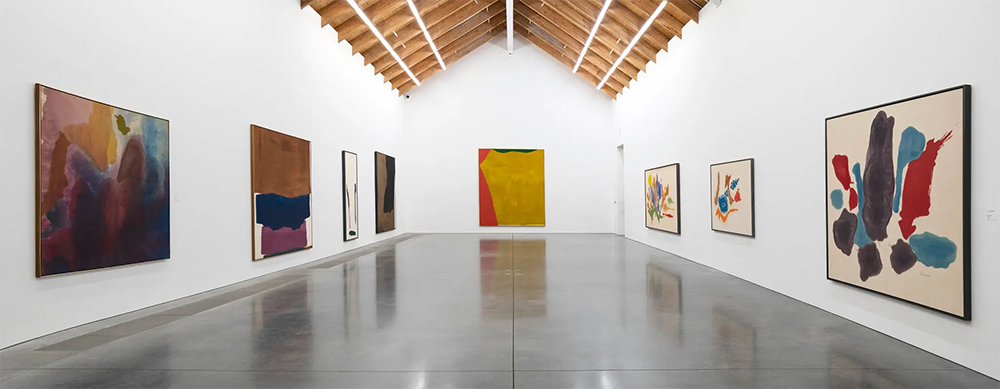
“Abstract Climates: Helen Frankenthaler in Provincetown” at the Paris Art Museum in Water Mill, New York, circa 2019.
Image courtesy of: The New York Times, photographed by: Gary Mamay
It took a while for critics and audiences to truly appreciate Frankenthaler’s art; and during that time, she never stopped experimenting. The 1950s was a time when the painter started to produce rounded shapes and lines as opposed to the fluid configurations she had previously painted. The following decade was known for larger shapes of color near her paintings’ edges and solid colors against typically white backgrounds. And by the 1970s, Frankenthaler abandoned her trademark soak-stain method and began using thicker paint.
Frankenthaler was initially recognized on an international scale in 1959 when she won the Premier Biennale de Paris prize; in 1966 she represented the United States in the 33rd Venice Biennale along with Roy Lichtenstein, Jules Olitski, and Ellsworth Kelly. Her first major museum exhibition was in 1960 at the Jewish Museum in New York City and her second was nine years later at the Whitney Museum of American Art… an international tour followed.
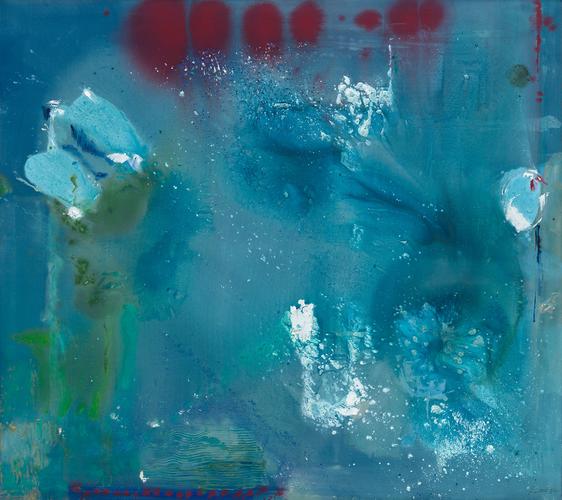
“Stella Polaris,” 1990. Acrylic on canvas. From the 2023 Gagosian exhibition, “Drawing Within Nature: Paintings From the 1990s.”
Dimensions are: 96″ x 108″
Image courtesy of: Helen Frankenthaler Foundation
Earlier this year, New York City’s Gagosian put on “Drawing Within Nature: Paintings From the 1990s.” The exhibition featured twelve paintings and two large-scale works on paper. Interestingly, some of these paintings had never been previously exhibited.
Most of the artwork shown was made when the painter was in her sixties; and what is surprising is how densely painted some of these works truly are. Interestingly, there is evidence that some unorthodox tools were used, such as a rake being dragged through pigment. The vast difference in these paintings was that the colors were not soft and feminine as critics were accustomed to with Frankenthaler. John Elderfield, chief curator emeritus of paintings and sculpture at New York City’s MOMA believes that with this new style (courtesy of The Wall Street Journal Men’s Issue), “it was almost as if she was saying, ‘I’m going to show you something very different.'”
As for Frankenthaler herself, she described her work as follows (courtesy of Gagosian), “A line, color, shapes, spaces, all do one thing for and within themselves, and yet do something else, in relation to everything that is going on within the four sides [of the canvas]. A line is a line, but [also] is a color. . . . It does this here, but that there. The canvas surface is flat and yet the space extends for miles. What a lie, what trickery—how beautiful is the very idea of painting.”
